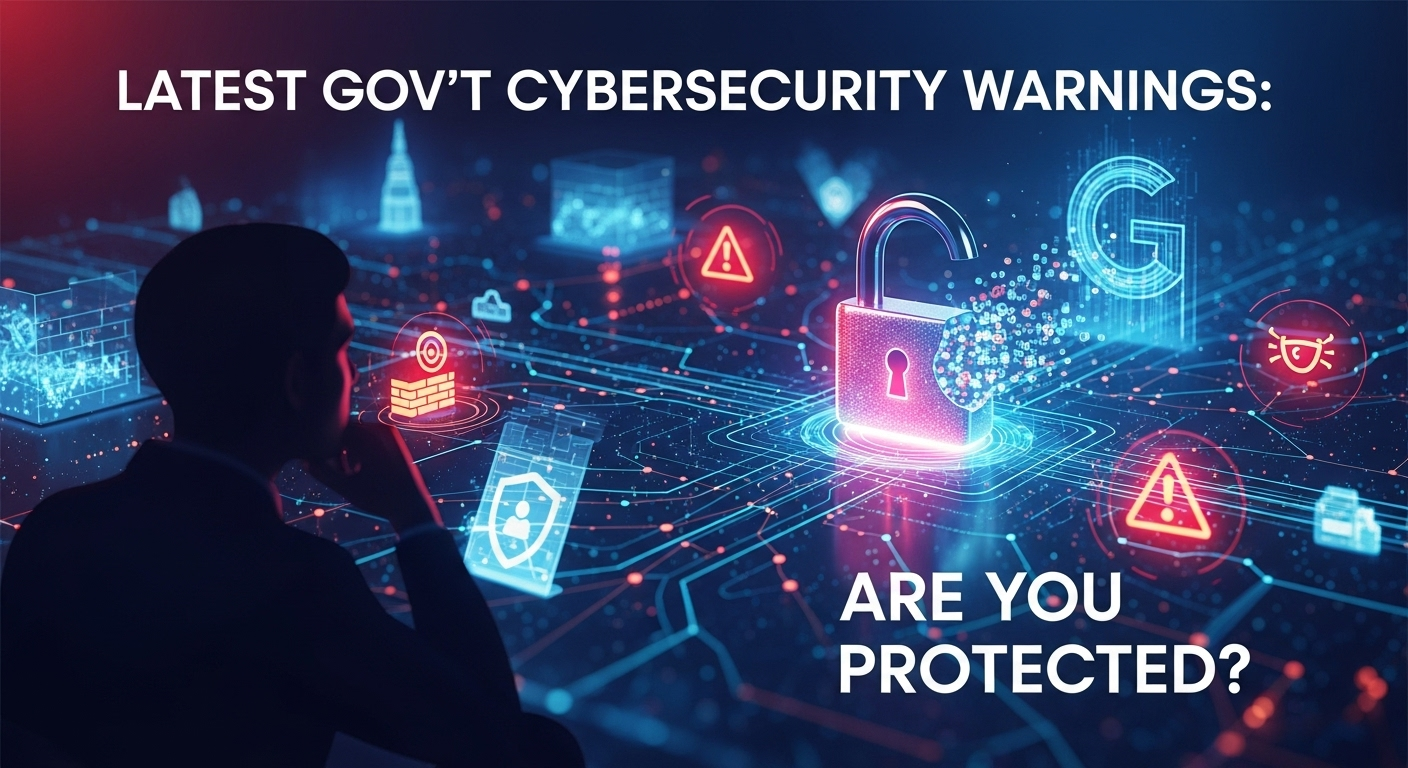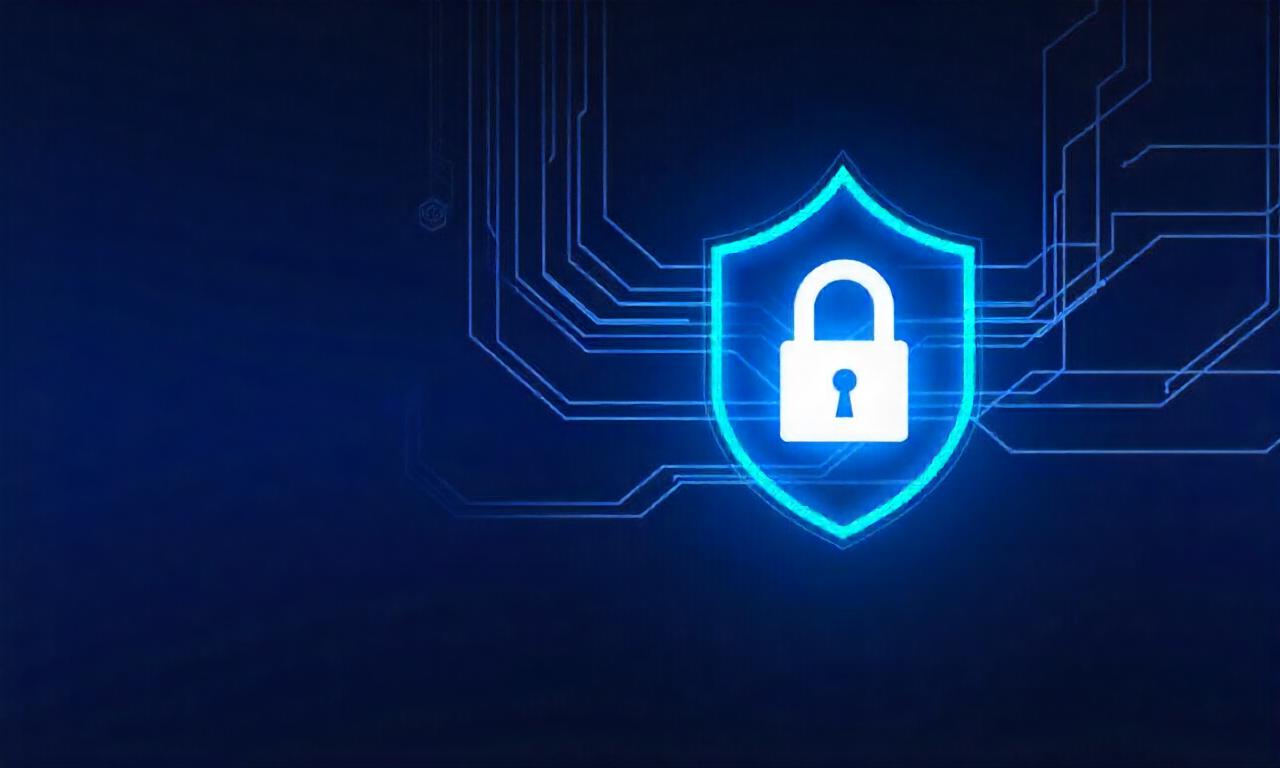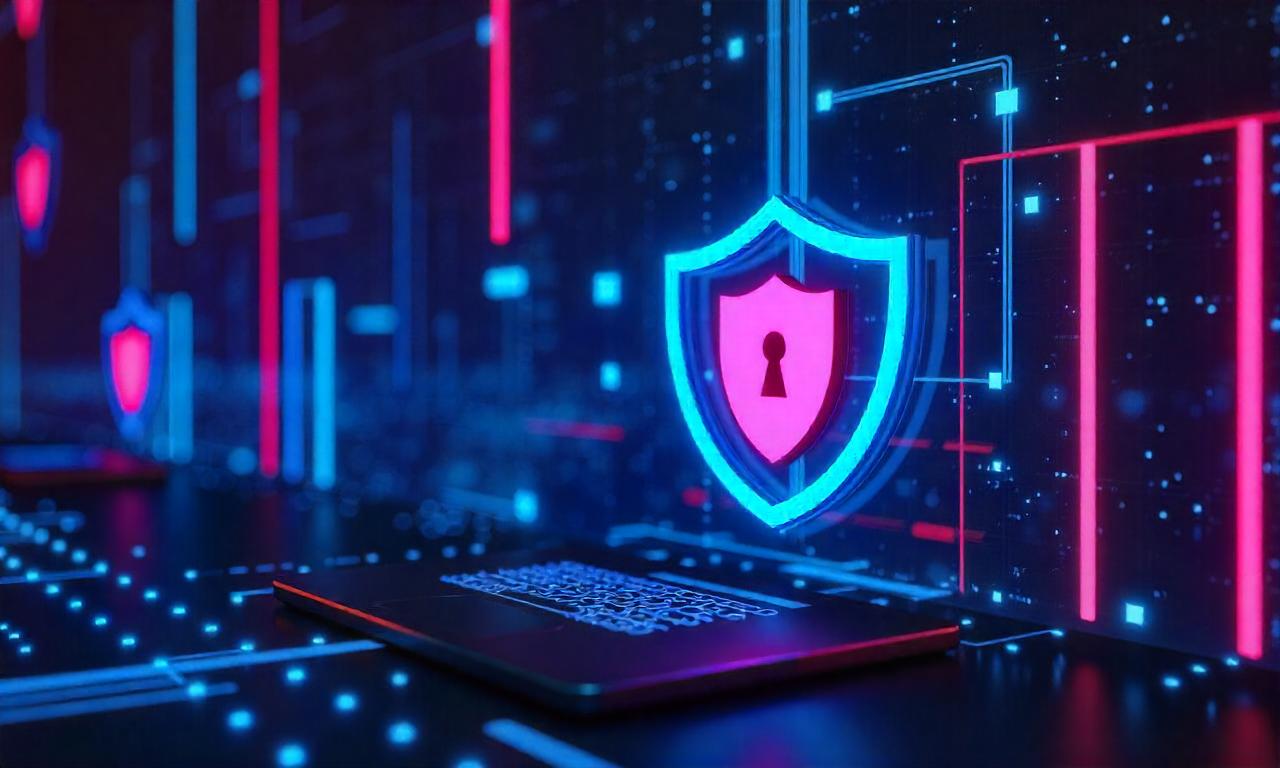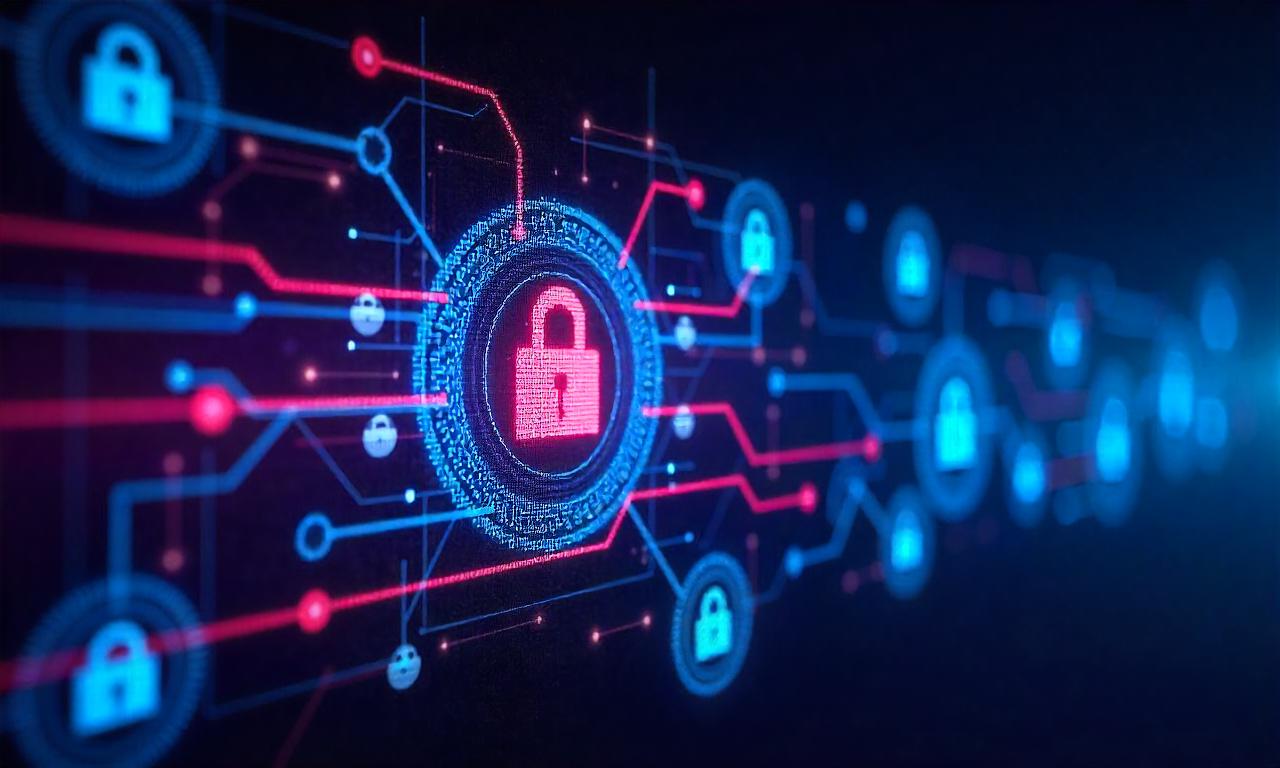In an era where our lives are inextricably linked to the digital realm, the background hum of cyber threats has grown into a deafening alarm. It’s no longer a question of if a cyberattack will occur, but when and how severe it will be. The latest government cybersecurity warnings paint a stark picture, moving beyond generic advice to pinpoint specific, evolving threats targeting everything from our critical national infrastructure to our personal devices. These are not mere suggestions; they are urgent calls to action from the highest levels of national security. For businesses, families, and individuals, ignoring them is akin to leaving the front door unlocked in a high-crime neighborhood. The critical question you must ask yourself is: are you adequately protected against these sophisticated and relentless attacks?
Table of Contents
ToggleLatest Gov't Cybersecurity Warnings: Are You Protected?
Understanding the Source: Who Issues These Warnings and Why?
When a government issues a cybersecurity warning, it's a signal that a threat has reached a significant level of credibility, scope, or potential impact. These alerts are not generated in a vacuum; they are the product of extensive intelligence gathering, threat analysis, and collaboration between various national security and law enforcement agencies. In the United States, primary sources include the Cybersecurity and Infrastructure Security Agency (CISA), the Federal Bureau of Investigation (FBI), and the National Security Agency (NSA). Globally, counterparts like the UK's National Cyber Security Centre (NCSC) and Australia's Australian Cyber Security Centre (ACSC) serve similar functions.
The core purpose of these warnings is to arm the public and private sectors with timely, actionable intelligence. By disseminating information about new malware strains, tactics used by malicious actors (often referred to as Tactics, Techniques, and Procedures or TTPs), and critical vulnerabilities in software, these agencies aim to foster a collective defense. The goal is to move organizations from a reactive posture—cleaning up after a breach—to a proactive one, where defenses are shored up before an attack can succeed. This protects not only individual companies but also the broader economy and critical services like energy, healthcare, and finance that we all depend on.
These alerts are a crucial component of a nation's defense strategy. Malicious cyber activities, whether from sophisticated nation-state actors or organized cybercrime syndicates, can disrupt daily life, compromise sensitive personal and corporate data, and inflict massive economic damage. Government warnings serve as an early-warning system, giving organizations a fighting chance to patch vulnerabilities, educate their employees, and verify their security controls against the very methods attackers are currently using in the wild.
The Central Role of CISA (Cybersecurity and Infrastructure Security Agency)
CISA has become the nerve center for cybersecurity warnings and guidance in the United States. Established to be the nation's primary risk advisor, CISA works collaboratively with partners across government and industry to defend against today's threats while building a more secure and resilient infrastructure for the future. Their advisories are often the most detailed and practical, providing specific Indicators of Compromise (IOCs) and concrete mitigation steps.
CISA’s "Alerts" and "Advisories" are particularly important. An Alert typically addresses a current, high-impact threat that requires immediate attention, such as an active ransomware campaign exploiting a new vulnerability. An Advisory, on the other hand, might provide a deeper analysis of a persistent threat actor, their TTPs, and long-term defensive strategies. Subscribing to CISA’s updates is a foundational step for any organization serious about its security posture, transforming government intelligence into a direct line of defense for your network.
The Current Threat Landscape: What Are the Key Warnings About?
Recent government warnings have consistently highlighted a handful of dominant and highly damaging threat vectors. While the specific tools may change, the underlying strategies of attackers often revolve around exploiting human error, unpatched systems, and weak identity controls. Understanding these primary threats is the first step toward building an effective defense, as they represent the frontline of the current cyber war. These are not theoretical risks; they are active campaigns causing real-world harm to organizations of all sizes every single day.
The focus of recent government alerts has been on threats that are scalable and profitable for attackers. This includes ransomware, which has evolved from a nuisance to a multi-billion dollar illicit industry, and sophisticated phishing campaigns that serve as the initial entry point for more complex attacks. Furthermore, the interconnected nature of modern business has given rise to supply chain attacks, where a single breach can have a catastrophic domino effect across hundreds of organizations.
These top-tier threats are frequently attributed to both highly organized cybercrime groups, motivated by financial gain, and nation-state actors, who engage in espionage, disruption, and intellectual property theft. The warnings emphasize that no organization is too small to be a target. Often, smaller businesses are seen as soft targets—gateways into larger, more valuable partner networks.
The Unrelenting Scourge of Ransomware
Ransomware remains public enemy number one in cyberspace. Government advisories from the FBI and CISA continuously warn about new and evolved ransomware strains. Modern ransomware attacks are now a multi-faceted extortion scheme. Attackers no longer just encrypt files; they engage in double extortion, where they also exfiltrate sensitive data and threaten to leak it publicly if the ransom is not paid. Some groups are now adding a third layer, launching Distributed Denial-of-Service (DDoS) attacks to pressure victims into paying.
Recent warnings specifically call out ransomware groups like LockBit, ALPHV (BlackCat), and Cl0p, which operate with a high degree of professionalism under a Ransomware-as-a-Service (RaaS) model. This model allows less-skilled criminals to "rent" the tools and infrastructure to launch attacks, drastically increasing the volume of threats. Government guidance strongly advises against paying ransoms, as it funds the criminal enterprise and does not guarantee data recovery. Instead, the focus is on prevention and resilience: robust backups, network segmentation, and rapid patching.
Sophisticated Phishing and Social Engineering
Phishing is the eternal gateway for cybercriminals. While the concept is old, the methods have become incredibly refined. Government warnings point to a rise in highly targeted spear-phishing campaigns, where emails are meticulously crafted to impersonate trusted colleagues, executives (known as CEO fraud or Business Email Compromise – BEC), or legitimate service providers. These emails often create a sense of urgency or authority to trick an employee into revealing credentials, transferring money, or deploying malware.
The latest evolution includes "MFA fatigue" or "MFA bombing" attacks. After stealing a password, attackers bombard the user's device with push notifications from their multi-factor authentication (MFA) app. The hope is that the user will eventually get annoyed and accidentally approve one, granting the attacker access. This tactic circumvents a security control once thought to be nearly foolproof, demonstrating that technology alone is not enough without vigilant, well-trained users.
Supply Chain Attacks: A Domino Effect of Risk
A major focus of recent national security warnings is the threat of software supply chain attacks. In this scenario, attackers don't target your organization directly. Instead, they compromise a trusted software vendor or service provider that you use. By injecting malicious code into legitimate software updates, they gain a foothold into the networks of every customer that installs the tainted update.
The 2020 SolarWinds SUNBURST attack was a watershed moment, illustrating the devastating potential of this vector. Government agencies have since placed a heavy emphasis on a concept known as the Software Bill of Materials (SBOM). An SBOM is essentially an ingredients list for a piece of software, detailing all the open-source and third-party components it contains. The idea is that if a vulnerability is discovered in a specific component, organizations can quickly check their SBOMs to see if they are affected, rather than being caught unaware.
Protecting Your Organization: A Proactive Defense Strategy
Reacting to a government warning is good; having a security framework that already addresses the core issues is better. Cybersecurity is not a one-time project but a continuous process of risk management. The guidance provided by agencies like CISA consistently revolves around establishing and maintaining fundamental security hygiene. These foundational practices are not glamorous, but they are responsible for preventing the vast majority of successful cyberattacks.
Building a proactive defense means assuming you are a target and implementing layered security controls—a concept known as "defense in depth." This strategy ensures that if one layer of defense fails, others are in place to detect or stop an attacker's progress. It involves a combination of technology, processes, and people, all working in concert to reduce the organization's attack surface and improve its resilience.
The most effective security programs are those that are integrated into the business culture, not just relegated to the IT department. When everyone from the CEO to the intern understands their role in protecting the organization's data, the collective defense becomes exponentially stronger. This cultural shift is perhaps the most powerful, long-term mitigation strategy of all.
Implementing a Robust Patch Management Program
One of the most frequent refrains in government cybersecurity warnings is the need for timely patch management. Attackers thrive on exploiting known vulnerabilities for which a patch is already available. A robust patch management program is your first line of defense against these opportunistic attacks. This is not just about Microsoft's Patch Tuesday; it involves tracking and applying updates for all hardware and software in your environment, including operating systems, browsers, applications, and network devices.
A successful program involves more than just clicking "update." It requires a comprehensive asset inventory (so you know what you need to protect), a system for prioritizing patches based on the severity of the vulnerability (using the Common Vulnerability Scoring System or CVSS), and a process for testing patches before deployment to ensure they don't disrupt business operations. Automation can play a key role here, ensuring that critical security patches are applied across the entire organization as quickly as possible.
The Non-Negotiable Need for Multi-Factor Authentication (MFA)
If you only implement one security control from this article, it should be MFA. Government agencies have stated that MFA can block over 99.9% of account compromise attacks. MFA requires a user to provide two or more verification factors to gain access to a resource, such as a password (something you know) and a code from an authenticator app (something you have).
Even if a malicious actor steals an employee’s password through a phishing attack, they will be unable to log in without that second factor. It is a simple yet incredibly powerful control. All government warnings stress the importance of implementing phishing-resistant MFA (such as FIDO2 security keys) wherever possible, especially for access to critical systems, admin accounts, and remote access solutions like VPNs. Avoiding weaker forms of MFA, like SMS text messages which are susceptible to SIM-swapping attacks, is also a key recommendation.
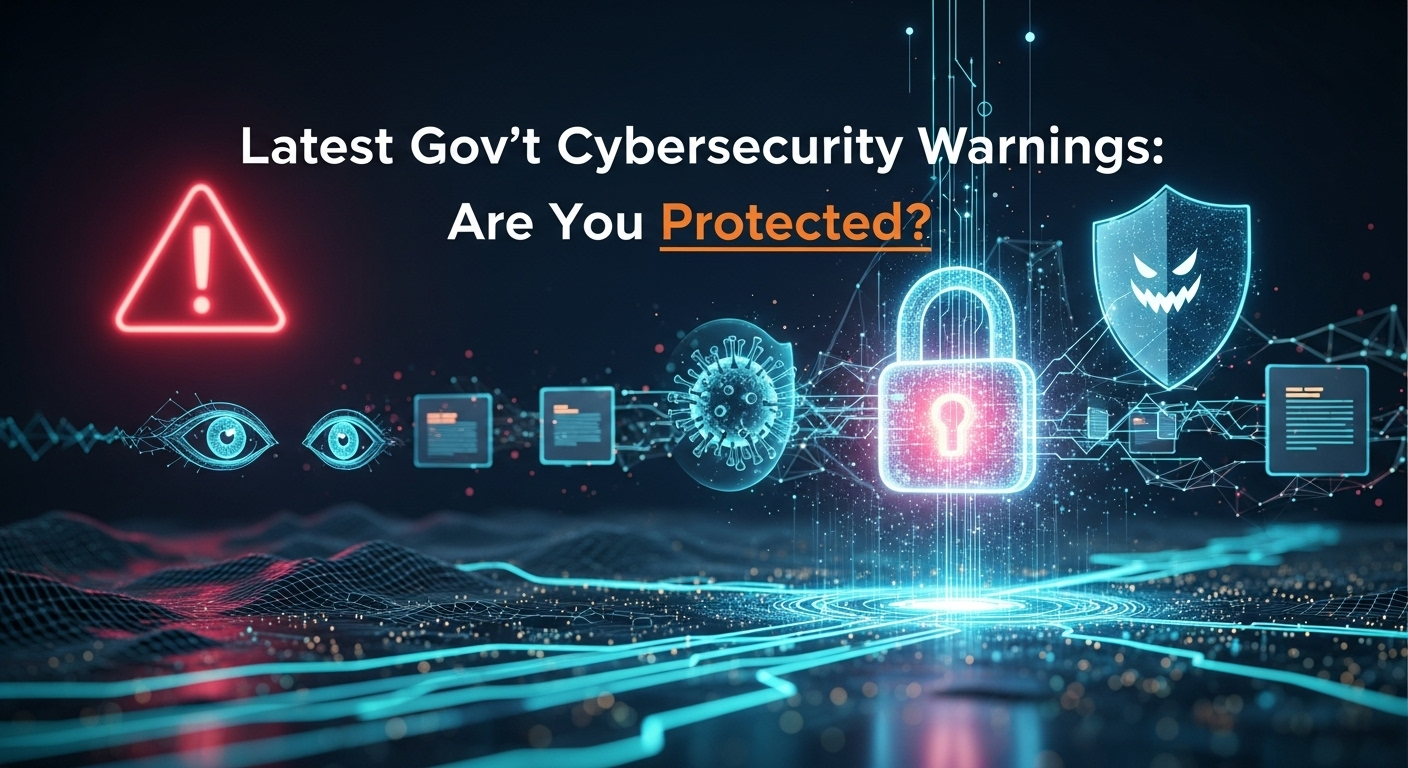
Employee Training: Your Human Firewall
Technology can only go so far. Your employees are a critical part of your defense system—your "human firewall." However, without proper training, they can also be your weakest link. A continuous security awareness training program is essential. This program should go beyond a boring annual slideshow and include engaging, relevant content on current threats.
Key training topics should include:
- Recognizing Phishing: How to spot suspicious emails, links, and attachments.
- Password Hygiene: The importance of using strong, unique passwords and a password manager.
- Data Handling: Policies on how to handle, store, and share sensitive information.
- Incident Reporting: A clear, blame-free process for employees to report suspected security incidents immediately.
Regular phishing simulations—sending safe, fake phishing emails to staff—are an excellent way to test and reinforce this training in a practical setting. When an employee clicks, it becomes a teachable moment, not a catastrophic breach.
Beyond the Basics: Advanced Measures for Enhanced Security
For organizations that have mastered the fundamentals, or those in high-risk industries, government guidance recommends adopting more advanced security measures. These strategies shift the focus from perimeter defense to an assumption of breach, emphasizing detection, response, and resilience. They acknowledge that a determined attacker may eventually get in, so the goal becomes to detect them quickly, contain the damage, and eradicate them from the network before they can achieve their objectives.
These advanced concepts require a greater investment in technology and expertise but provide a significantly higher level of assurance. They are cornerstones of a modern, mature security program and are increasingly seen as best practices for any organization, regardless of size. Implementing frameworks like Zero Trust and having a well-honed incident response plan can be the difference between a minor incident and a business-ending catastrophe.
Developing and Testing an Incident Response (IR) Plan
It’s not enough to have defensive measures; you must have a plan for what to do when they fail. An Incident Response (IR) plan is a pre-defined, documented set of procedures to follow in the event of a security breach. It outlines who to contact, what steps to take to contain the threat, how to preserve evidence for forensics, and how to communicate with stakeholders, customers, and regulators.
Having this plan is only half the battle. Government agencies stress the importance of testing the plan regularly through tabletop exercises. This involves gathering the IR team—which may include IT, legal, communications, and executive leadership—and walking through a simulated breach scenario. These exercises reveal gaps in the plan, clarify roles and responsibilities, and build the muscle memory needed to act calmly and effectively under the extreme pressure of a real attack.
Adopting a Zero Trust Architecture (ZTA)
The traditional security model of a "castle and moat"—a strong perimeter with a trusted internal network—is obsolete. With remote work, cloud services, and mobile devices, the perimeter has dissolved. The modern approach, strongly advocated by government cybersecurity leaders, is Zero Trust. The core principle of Zero Trust is simple: never trust, always verify.
In a Zero Trust Architecture (ZTA), no user or device is trusted by default, regardless of whether they are inside or outside the corporate network. Every access request is authenticated, authorized, and encrypted before being granted. Access is granted on a least-privilege basis, meaning users are only given the absolute minimum level of access needed to perform their jobs. This model severely limits an attacker's ability to move laterally within a network after an initial compromise, effectively containing a breach to a small area.
Threat Mitigation at a Glance
The table below summarizes the major threats highlighted in recent warnings and the key government-recommended mitigations.
| Threat Type | Description | Key Government Recommended Mitigations |
|---|---|---|
| Ransomware | Malicious software that encrypts data and demands payment for its release, often coupled with data theft (double extortion). | – Maintain offline, encrypted, and tested backups.<br>- Implement a robust patch management program.<br>- Segment networks to prevent lateral movement. |
| Phishing / BEC | Deceptive emails or messages designed to steal credentials, money, or deploy malware. BEC targets financial transactions. | – Mandate phishing-resistant Multi-Factor Authentication (MFA).<br>- Conduct regular employee security awareness training.<br>- Use email filters and DMARC/SPF/DKIM to block spoofing. |
| Supply Chain Attack | Compromising a trusted software vendor to distribute malware to their customers through legitimate update channels. | – Demand Software Bill of Materials (SBOMs) from vendors.<br>- Tightly control and monitor third-party access.<br>- Adopt a Zero Trust security model. |
| Exploitation of Known Vulnerabilities | Attackers scanning the internet for unpatched systems and using publicly known exploits to gain initial access. | – Maintain a comprehensive asset inventory.<br>- Prioritize and apply security patches urgently.<br>- Use a vulnerability scanner to identify weaknesses. |
—
Frequently Asked Questions (FAQ)
Q: Where can I find these official government cybersecurity warnings?
A: The most reliable source in the US is the Cybersecurity and Infrastructure Security Agency (CISA) website, specifically their "Alerts and Advisories" section. You can subscribe to their mailing list for immediate updates. The FBI also posts alerts through their Internet Crime Complaint Center (IC3) and regional field office announcements.
Q: I run a small business. Are these warnings really relevant to me?
A: Absolutely. Attackers often view small businesses as "soft targets" because they may lack the robust security resources of larger corporations. Furthermore, small businesses are often a part of the supply chain for larger companies, making them an attractive stepping stone for attackers. The fundamental guidance in these warnings—patching, MFA, backups, and training—is critical for businesses of all sizes.
Q: What is the very first thing I should do if I suspect a security breach?
A: Your first priority is to contain the damage. Disconnect the affected machine(s) from the network to prevent the threat from spreading. Do not turn the machine off, as this can destroy volatile memory (RAM) which may be crucial for a forensic investigation. After containment, immediately activate your Incident Response plan and contact your IT/security team or a third-party cybersecurity firm for assistance. For significant incidents, you should also report it to the FBI via the IC3.
Q: How often are these government warnings updated?
A: The frequency varies based on the threat landscape. CISA issues critical "Alerts" on an as-needed basis when a severe, active threat emerges. More general "Advisories" and other guidance are released regularly. The threat landscape is constantly changing, so it's a good practice to check for updates or subscribe to a news feed at least weekly.
Conclusion: Security as a Continuous Journey
The latest government cybersecurity warnings are not meant to inspire fear, but to catalyze action. They provide a clear roadmap of the threats we face and the concrete steps we can take to defend ourselves. In today's digital ecosystem, cybersecurity is not a product you can buy or a project with an end date; it is a continuous process of vigilance, adaptation, and improvement.
Protection begins with mastering the fundamentals: strong patch management, universal MFA, robust backups, and an educated workforce. For those seeking a higher level of maturity, embracing a Zero Trust mindset and preparing for the worst with a tested Incident Response plan are the next logical steps.
Whether you are a C-suite executive, an IT professional, a small business owner, or an individual user, you have a role to play in this collective defense. Take the time to review your own security posture against the guidance in these warnings. By treating cybersecurity as a shared responsibility and a core organizational value, we can build a more resilient digital future for everyone. The question is no longer just "Are you protected?" but "What are you doing to stay protected?"
***
Article Summary
The relentless pace of cyberattacks has prompted government agencies worldwide to issue increasingly specific and urgent cybersecurity warnings. These alerts, primarily from bodies like the U.S. Cybersecurity and Infrastructure Security Agency (CISA), are designed to arm organizations and individuals with actionable intelligence against active and evolving threats. The core message is clear: proactive defense is no longer optional.
Key threats dominating the current landscape include multi-extortion ransomware campaigns, highly sophisticated phishing and social engineering tactics like "MFA fatigue," and debilitating software supply chain attacks. These vectors exploit common weaknesses such as unpatched systems, human error, and inadequate identity controls, affecting entities from critical infrastructure down to small businesses and individual users.
To combat these threats, government guidance consistently emphasizes a "defense in depth" strategy built on fundamental security hygiene. The most critical, non-negotiable protections include implementing a robust patch management program, mandating phishing-resistant Multi-Factor Authentication (MFA) across all services, and establishing a continuous security awareness training program to cultivate a vigilant "human firewall."
For a more mature security posture, advanced measures are recommended, such as developing and regularly testing a formal Incident Response (IR) plan to ensure readiness for a breach. Furthermore, adopting a Zero Trust Architecture—a model based on the principle of "never trust, always verify"—is crucial for limiting an attacker's movement within a network. Ultimately, cybersecurity is a continuous journey of vigilance and shared responsibility, requiring a commitment from everyone to build and maintain a resilient digital environment.

